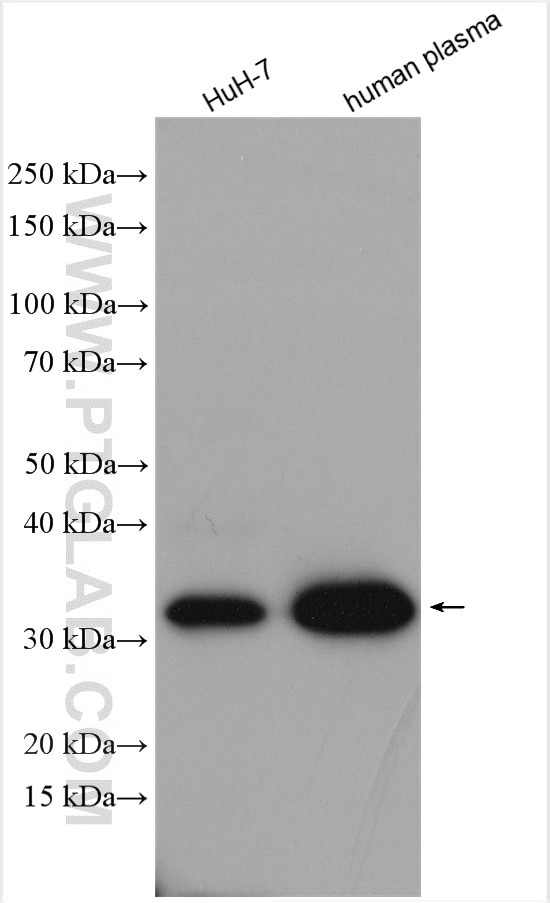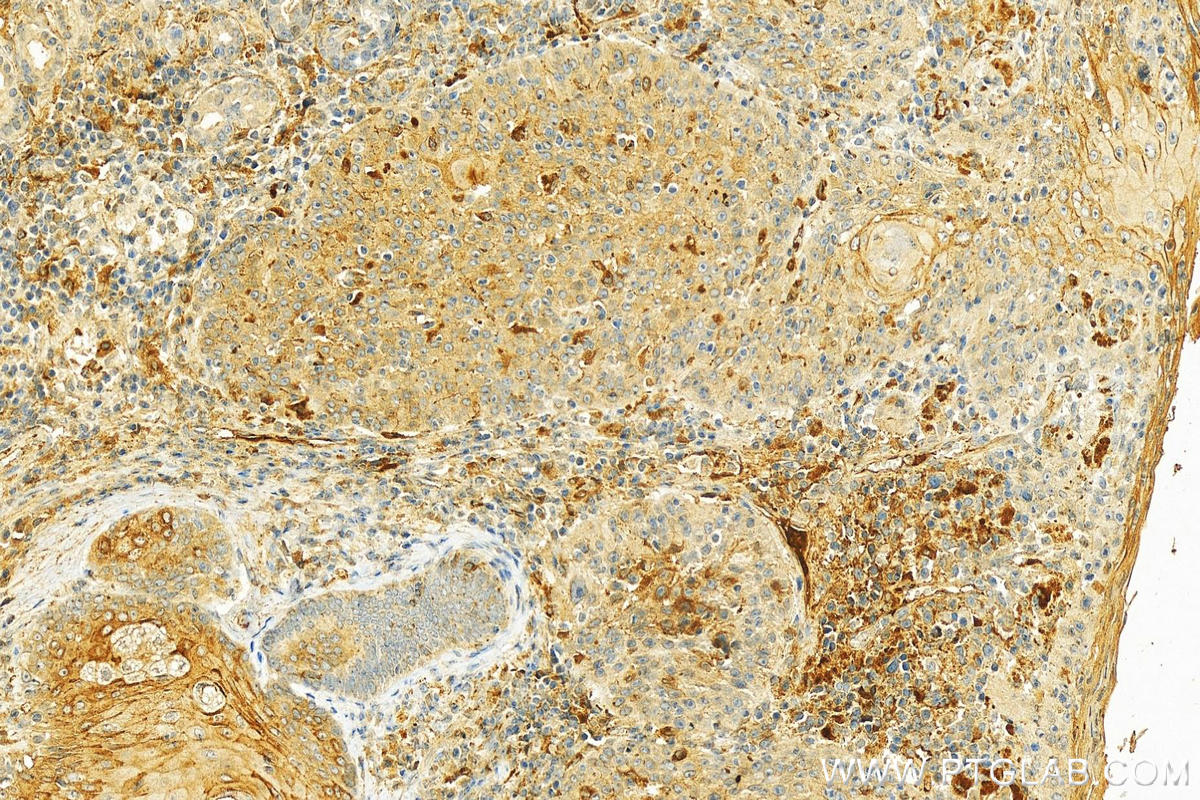Validation Data Gallery
Tested Applications
| Positive WB detected in | HepG2 cells, HuH-7 cells, human plasma |
| Positive IHC detected in | human skin cancer tissue Note: suggested antigen retrieval with TE buffer pH 9.0; (*) Alternatively, antigen retrieval may be performed with citrate buffer pH 6.0 |
| Positive IF/ICC detected in | HepG2 cells |
Recommended dilution
| Application | Dilution |
|---|---|
| Western Blot (WB) | WB : 1:1000-1:6000 |
| Immunohistochemistry (IHC) | IHC : 1:300-1:1200 |
| Immunofluorescence (IF)/ICC | IF/ICC : 1:200-1:800 |
| It is recommended that this reagent should be titrated in each testing system to obtain optimal results. | |
| Sample-dependent, Check data in validation data gallery. | |
Published Applications
| WB | See 8 publications below |
| IHC | See 2 publications below |
| IF | See 4 publications below |
Product Information
18254-1-AP targets APOE in WB, IHC, IF/ICC, ELISA applications and shows reactivity with human samples.
| Tested Reactivity | human |
| Cited Reactivity | human, mouse |
| Host / Isotype | Rabbit / IgG |
| Class | Polyclonal |
| Type | Antibody |
| Immunogen | APOE fusion protein Ag13070 相同性解析による交差性が予測される生物種 |
| Full Name | Apolipoprotein E |
| Calculated molecular weight | 36 kDa |
| Observed molecular weight | 34-38 kDa |
| GenBank accession number | BC003557 |
| Gene Symbol | APOE |
| Gene ID (NCBI) | 348 |
| RRID | AB_2878525 |
| Conjugate | Unconjugated |
| Form | Liquid |
| Purification Method | Antigen affinity purification |
| UNIPROT ID | P02649 |
| Storage Buffer | PBS with 0.02% sodium azide and 50% glycerol , pH 7.3 |
| Storage Conditions | Store at -20°C. Stable for one year after shipment. Aliquoting is unnecessary for -20oC storage. |
Background Information
The apolipoprotein E (APOE) is a 299-amino acid polypeptide that mediates the binding, internalization, and catabolism of lipoprotein particles, and also serves as a ligand for the LDL (apo B/E) receptor and for the specific apo-E receptor (chylomicron remnant) of hepatic tissues. The very strong association of the APOE ɛ4 allele with AD risk and its role in the accumulation of amyloid β in brains of people and animal models solidify the biological relevance of APOE isoforms but do not provide mechanistic insight. APOE can be detected 43kDa and 69kDa dimers (PMID: 9831633).
Protocols
| Product Specific Protocols | |
|---|---|
| WB protocol for APOE antibody 18254-1-AP | Download protocol |
| IHC protocol for APOE antibody 18254-1-AP | Download protocol |
| IF protocol for APOE antibody 18254-1-AP | Download protocol |
| Standard Protocols | |
|---|---|
| Click here to view our Standard Protocols |
Publications
| Species | Application | Title |
|---|---|---|
Br J Cancer A new panel of pancreatic cancer biomarkers discovered using a mass spectrometry-based pipeline. | ||
Transl Oncol Multi-omics analysis-based macrophage differentiation-associated papillary thyroid cancer patient classifier | ||
Biochim Biophys Acta Mol Cell Biol Lipids Inducible global knockout of surfeit locus protein 4 in adult mice results in hypolipidemia, intestinal lipid accumulation, liver injury, and increased mortality | ||
bioRxiv SARS-CoV-2 desensitizes host cells to interferon through inhibition of the JAK-STAT pathway. | ||
Stem Cell Res Ther Single-cell sequencing of facial adipose tissue unveils FKBP5 as a therapeutic target for facial infiltrating lipomatosis |




